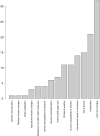Patterns, Drivers, and Challenges of Vector-Borne Disease Emergence
- PMID: 31800374
- PMCID: PMC7640753
- DOI: 10.1089/vbz.2018.2432
Patterns, Drivers, and Challenges of Vector-Borne Disease Emergence
Abstract
Vector-borne diseases are emerging at an increasing rate and comprise a disproportionate share of all emerging infectious diseases. Yet, the key ecological and evolutionary dimensions of vector-borne disease that facilitate their emergence have not been thoroughly explored. This study reviews and synthesizes the existing literature to explore global patterns of emerging vector-borne zoonotic diseases (VBZDs) under changing global conditions. We find that the vast majority of emerging VBZDs are transmitted by ticks (Ixodidae) and mosquitoes (Culicidae) and the pathogens transmitted are dominated by Rickettsiaceae bacteria and RNA viruses (Flaviviridae, Bunyaviridae, and Togaviridae). The most common potential driver of these emerging zoonoses is land use change, but for many diseases, the driver is unknown, revealing a critical research gap. While most reported VBZDs are emerging in the northern latitudes, after correcting for sampling bias, Africa is clearly a region with the greatest share of emerging VBZD. We highlight critical gaps in our understanding of VBZD emergence and emphasize the importance of interdisciplinary research and consideration of deeper evolutionary processes to improve our capacity for anticipating where and how such diseases have and will continue to emerge.
Keywords: global change; infectious disease; mosquito; tick; vector-borne; zoonotic.
Conflict of interest statement
No conflicting financial interests exist.
Figures





References
-
- Ahantarig A, Trinachartvanit W, Baimai V, Grubhoffer L. Hard ticks and their bacterial endosymbionts (or would be pathogens). Folia Microbiol (Praha) 2013; 58:419–428 - PubMed
-
- Bakken JS, Dumler JS, Chen S-M, Eckman MR, et al. Human granulocytic ehrlichiosis in the Upper Midwest United States: A new species emerging? JAMA 1994; 272:212–218 - PubMed
-
- Barbour AG, Fish D. The biological and social phenomenon of Lyme disease. Science 1993; 260:1610–1616 - PubMed
Publication types
MeSH terms
Grants and funding
LinkOut - more resources
Full Text Sources
Other Literature Sources
Miscellaneous

